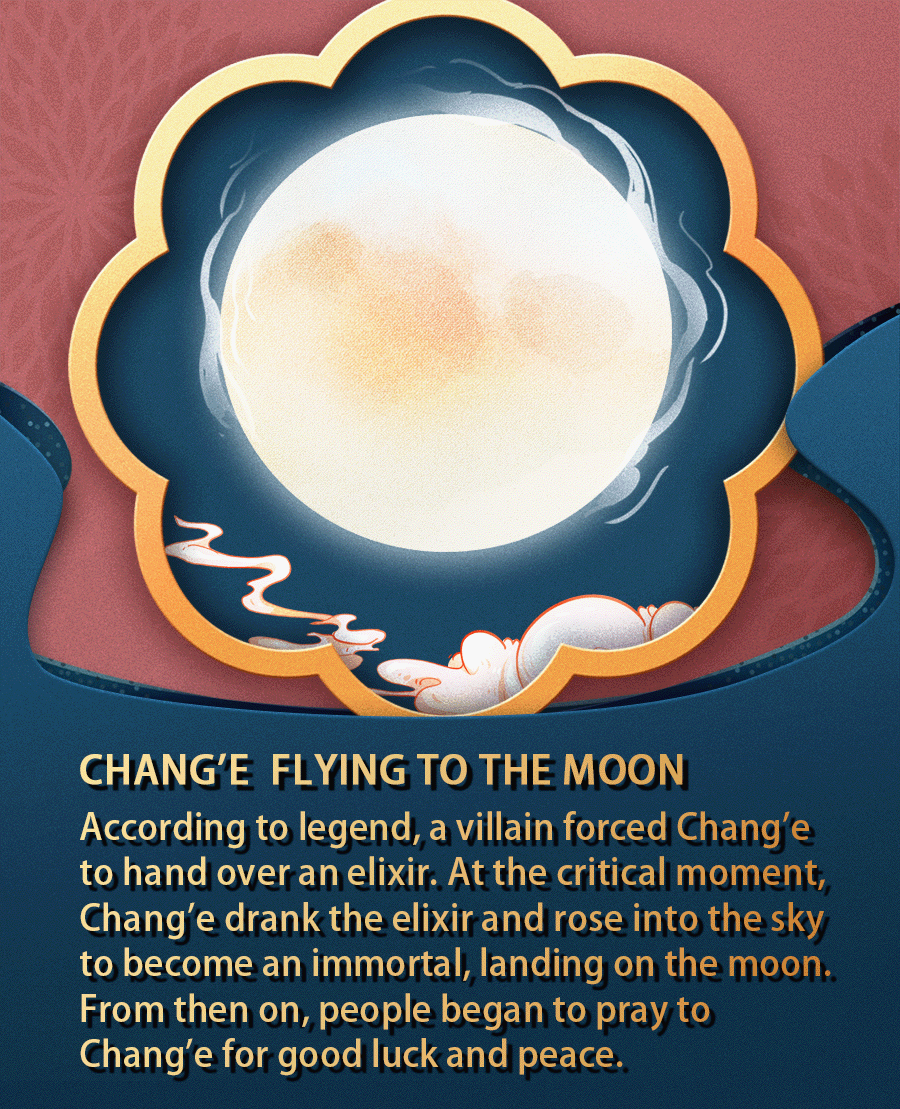Chinese keyword & Mid-Autumn Festival
 0 Comment(s)
0 Comment(s) Print
Print E-mail China.org.cn, September 8, 2022
E-mail China.org.cn, September 8, 2022
The written word and tradition in China
Editor's note: The Chinese character 月 ("yue"), meaning the moon, is a keyword for China's Mid-Autumn Festival. It falls on the 15th day of the eighth lunar month, usually in mid or late September. This year, it falls on Sept. 10.
The Mid-Autumn Festival has its origins in the ancient worship of celestial phenomena, and was initially held to worship the moon in the fall. As an ancient Chinese custom, moon worship was an important ritual for offering sacrifices to the "Moon Goddess" in parts of China, from which several practices have gradually derived, such as appreciating the moon. The festival emerged in the Song dynasty (960-1279) and was as famous as New Year's Day during the Ming (1368-1644) and Qing (1636-1912) dynasties, before becoming one of the most important festivals in China.
1. Chang'e flying to the moon
According to legend, 10 suns appeared in the sky at the same time in ancient China, ruining the crops and forcing the people into poverty and despair. One day, a hero named Hou Yi shot down nine of the suns, and ordered the last one to rise and fall to bring benefits to the people. Hou Yi was then rewarded for his deed with an elixir by the Queen of Heaven. If he took it, he would immediately ascend to heaven and become an immortal. However, Hou Yi instead gave the elixir to his wife Chang'e for safekeeping, because he didn't want to leave her.
When Hou Yi was not at home, a villain named Peng Meng forced Chang'e to hand over the elixir. At the critical moment, Chang'e drank the elixir and rose into the sky to become an immortal, landing on the moon. From then on, Hou Yi missed his wife very much. On the night of the Mid-Autumn Festival with the moon at its fullest, he put her favorite sweet foods and fresh fruits on a table as a distant sacrifice to Chang'e who lived in the Moon Palace.
After learning that Chang'e became an immortal on the moon, people placed incense burners on tables outdoors beneath the moon and prayed to Chang'e for good luck and peace. The custom of worshipping the moon on the Mid-Autumn Festival then spread among the people.






Go to Forum >>0 Comment(s)